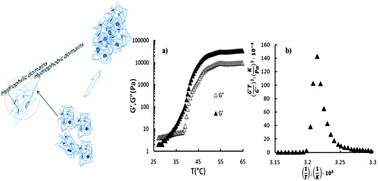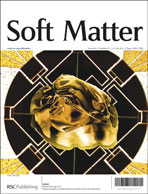Investigation of gelation mechanism of an injectable hydrogel based on chitosan by rheological measurements for a drug delivery application
Abstract
The aim of the current study was to improve the knowledge of the gelation mechanism of injectable thermosensitive hydrogels comprising chitosan (CS) and β-glycerophosphate (GP). The CS–GP solution was designed to be liquid at room temperature and gelled at 37 °C. The theory initially worked out by Fredrickson and Larson for block copolymers near their order–disorder transition was extended and proposed to precisely determine the gel point in such systems by considering the aggregation of hydrophobic acetylated blocks of chitosan chains and gelation in CS–GP systems as an order–disorder transition of block copolymers. To investigate the possibility of the application of this system for the sustained delivery of meglumine antimoniate (MGA), the effect of incorporation of MGA and MGA-loaded microspheres (CSMs) was also investigated. It was found that a lower molecular weight of chitosan, drug loading and microparticle incorporation into the CS–GP system enhance the temperature of the G′ and G″ crossover point, attributed to the formation of hydrophobic interactions, while decreasing the gel point determined based on the Fredrickson and Larson theory. Moreover, the in vitro release studies showed that the burst release is reduced from 88% in the first 24 hours for drug loaded CS–GP hydrogel to 66% for CSM-loaded hydrogel.


 Please wait while we load your content...
Please wait while we load your content...